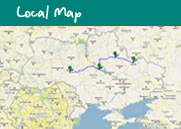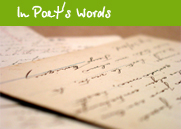You are here:
- Home
- Where are we?
- Odessa
- Area Profile
Area Profile - Odessa
-
What is the history of the Jewish community?
- The emergence of the Jewish community
- The Jewish community before the Revolution
- Early Soviet period
- The Holocaust years
- Post-war situation
- The revival of the Jewish community
- What should I see there?
- Where can I feel the Jewish spirit?
- Are there any historically significant people?
- What is the lifestyle of the modern local community like?
- Where can I eat delicious kosher food?
- The things worth spending money on
- What should I bring back home with me?
- What is the best way for me to get there?
- Where should I stay?
- What should I read and see?
- Whom can I contact with any questions?
- What should I pack for my trip?
- Useful vocabulary
Time of Jewish Community Emerge
Community before the Revolution
Early Soviet Period
Years of Holocaust
Time when Odessa emerged is still a subject of dispute among historians. First Jews could be residents of the Greek colonies in the IV (V) - II century B.C., or the Genoese trading post in Ginestra XIІІ century. Some scientists speculate on Jewish roots of the peoples which inhabit the northern Black Sea region , started the VII century BC. By the end of the XIV century the Turkish settlement named Hadzhibey was founded in the Golden Horde. In the center of modern Odessa Jewish tombstones were found in the "Turkish layer" of 1770-s. This confirms that the Jews lived there before the foundation of Odessa. According to the agreement of 1791 the land bordering the Dniester and Youzhniy (Southern) Boog rivers, and the fortress Hadzhibey were affixed to Russia. In a short period of three years, a booming port city developed, with a high of autonomy level in trade matters. Government policy encouraged the re-settlement of population on these lands. Jews settled in Odessa were engaged in trade business, crafts, grain trade, timber for construction, retail, and grocery production - become employees of foreign, mostly Greek and Russian grain-trade companies and work for them as recruiters-agents, brokers, appraisers, cashiers, loaders, etc.
By the beginning of the XIX century Odessa has become the center of the Novorossiysk region and a home to some 300 Jewish families. City mayor Duke de Richelieu was very loyal to Jewish people. During this time the Jewish community of Odessa finally officially formed, and the Hasidic community was quite active. But only by the end of the century there has been a vigorous revival of the Hasidic movement. Rabbi Yitzchak Rabinowitz from the city of Bendery was invited to fill up position of the chief rabbi. Foreign Jews began to settle in Odessa in 1820 mostly from Germany and Galicia, which brought a habit and culture of education to Jewish communities, thus, creating a confrontation between enlightened and traditional Judaism.
Russia's first reformist synagogue was also the first Russian Choral Brody synagogue was opened in Odessa in 1841. It had been founded by settlements of Brody shtettle. The new two-storey main "opponents" synagogue was erected in 1850 by architect Francis (Franz Osipovich) Morandi who was famous in Europe at that time. By 1855 there were four synagogues and 34 prayer houses in Odessa. After half a century – there were seven synagogues and 45 prayer houses. These buildings are associated with the names of the architect Felix Osipovich Kollovich , cantors Nissan and Blumenthal and Pinhas Minkowski, conductor David Nowakowski , whom contemporaries called "Jewish Bach."
In the second half of the XIX - first quarter of the XX century Odessa became the third city in the world by the number of Jewish population (after New York and Warsaw). Almost one-fifth of the total Jewish population of the city was guild merchants. By the year of 1910 Jews owned 7 of 10 banks in the city, more than 40% of factory enterprises, almost 90% of the grain trade through the port of Odessa, who became the second largest of the Russian Empire, and all 59 craft shops for sewing women's clothes. There were Jewish professional societies at that time in Odessa (similar to unions).
At the same time so called "Jewish intelligencia" emerges in Odessa - doctors, notaries, lawyers, artists, musicians, writers, poets, historians, mathematicians. In 1917 Odessa became one of Russia's largest centers of Jewish education. This was the era when secular Jewish environment got formed.
At the same time, Odessa became the first Russian city where Jews were subjected to pogroms (1821 and 1859). The reason was a trade and economic competition. The main counter-parties in the action were local Greek merchant marines and sailors. A three-day destruction of hundreds of Jewish taverns, shops and homes in 1871, organized by the Greek merchants followed. Russian and Ukrainian citizens participated in this and subsequent massacres of 1881 and 1886. City authorities did not stop the rebels. Conversely, during pogroms of 1881 for organizing Jewish self-defense nearly 150 participants had been arrested. Most of them were students of the University of Novorossiysk. The bloodiest massacre in Odessa and suburbs history took place in October 18-20 of 1905: about 400 Jews were killed and 50,000 were left homeless. Jewish self-defense and police tried to stop the student massacre. The first day they succeeded. But later on artillery-armed troops had been sent against them.
Pogroms and growing anti-Semitism led to re-consideration process, to enhance Palestine-dedicated and then Zionist tendencies. Center Billu moved to Odessa from Kharkov in 1882. Groups Hovevey Zion was active there at that time, and in 1889-1893 there were leaders of the B'nai Moshe Order (one of their leaders was Ahadha-Am).
Committee of Jewish farmers and artisans in Syria and Palestine welfare society was active in Odessa. Club Poaley Zion was organized in Odessa in 1902. The club published its magazine in 1904 in Russian "Zionist Labor Chronicle." Since 1906 a social-democratic central committee of this organization was active in Odessa. Zionists and Bund were gaining more community reputation and received in elections of 1918 board of community, the largest number of seats.
Criminal Jewish Odessa –is a separate issue. Many people are familiar with on-screen images of Sonka-Zolotaya Roochka (Sonka-The Golden Hand) , Mishka-Yaponchik (Mishka-Jap)... It is believed that it was in Odessa prison where alphabet was invented by tapping, established the basics of thieves jargon ("feni"), the definitions "racket" and "roof" also were rooted from Odessa. So called "Art of living" had been greatly depending on a degree of banditry adoption in different "cultural" levels. And people even joking, that the anarchy, was "invented on Malaya Arnautskaya Street" as well. The outbreak of the First World War in 1914 dramatically changed the situation. Jewish refugees appeared in Odessa, as well as those Jews who were mandatory evicted from the Western gubernias. The Jewish Refugee Committee to Aid War Victims established in 1914 was taking care of these people. Stations of Healthcare Jewish Society "Kapli Moloka" ("Drops of milk"), were organized to supply milk to newborns, infants of all population including non-Jewish.
After 1917 February Revolution, the political power had repeatedly changed several times. Jewish political parties and social organizations activity get revitalized. Zionist literature, Jewish political parties newspapers were published in Odessa. 109 out of 188 different publications in Hebrew language were published in Russia in 1917-1919, were published in Odessa.
Fleeing the pogroms, endless requisitions and eventual impoverishment, Central Emigration Bureau was established in Odessa. Fleeing from the pogroms, Jewish refugees were looking for immediate emigration including Palestine. Ha-Halutz Committee of Odessa founded an agricultural colonies Rehovot and Hadera in Heretz Yisrael. Departure of Jews did not stop even during the years of the Civil War.
At the same time Mishka-Yaponchik got released under an amnesty, and organized Jewish revolutionary self-defense squads. They include working and non-working people as well as criminals. Mishka-Yaponchik squads helped to prevent pogroms in Odessa during the Civil War period.
On February 7, 1920 Odessa was invaded by the Red Army finally establishing the Soviet Power. After the famine of 1921-1922 a population remained in Odessa was only 324000 people - only a half of pre-war population. Intellectuals and the most qualified of the population moved to Moscow, Leningrad, Ural and other centers of industrial development of the first Soviet five-year plans projects. However, a rapid growth of the city from ruins of the nationalized factories, revived the Odessa Port. City started its development as a resort.
Odessa's remaining Jewish population social and cultural life at that time was guided by Evsektsiya (Jewsection) Provincial Committee of the VKP(B). Committee had a goal to give a communist education to Jewish masses, and to create a new socialist Jewish culture based on Yiddish language: the Jewish soviet-party school was established, police department and district courts with Yiddish language as a primary language. Existing Jewish schools were nationalized, and dozens of new Jewish schools, educational institutions at all levels were opened. Up to the end of 1930’s there were a few publishing houses in Yiddish, Jewish libraries, Mendele Moher Sforim museum in the city. Odessa's Jewish Theater was opened in 1935. At the same time the old Jewish organizations OZE, ORT and others were eradicated. By the end of 1922 there was a purge of "Jewish Public Aid Committee to Pogroms Victims". But some time in 1921-1922, due to office representative of foreign organizations in the city, the Jewish Committee of War Victims, Odessa branch of the Jewish Healthcare Society, continued to work. Group He-Halutz continued to operate illegally. In the early 1920s, a movement of Jewish Scouts (Tzofim), was transformed into the Ha-Shomer Ha-Tzair later in 1922. The fate of the participants is unknown.
The end of the NEP (New Economy Policy) completely abolished the trade - a foundation of Odessa’s fast growth. The elimination of religious communities, repressions against intellectuals and clerics have changed the cultural background of the city. In 1928 Jewish educational institutions, schools and offices were liquidated. In 1938 the Resolution of the CKKP (b)Y [ЦК КП(б)У] "About Reorganization of the National Schools in Ukraine," the functioning of these schools was announced harmful and unnecessary phenomena. National schools were affected by the wave of repressions. To learn or to teach Hebrew or Yiddish lessons could be a subjected to arrest and execution, as a member of "counter-revolutionary organization" such as "Zionist", for example. According to incomplete data of "Odessa Martyrology" about 33000 cases of repressions in Odessa County, Jews comprise not less than 2050 people. Out of this amount 516 were killed according to archives data base.
Nevertheless, before the WWII, Odessa took the third place in Ukraine on Jewish population after Kiev and Kharkov. The count of Jews in the city who survived the revolution, Civil War and repressions is a 1/3 – about 180 out of 600 thousands.
October 16, 1941 was a beginning of German-Romanian military forces invasion to Odessa. There were about hundred thousand Jews in the city at that time. Starting the first days of occupation Einsatzgruppen and soldiers of the Romanian operational echelon started an extermination of communists, comsomol members and Jews. Executions and the gallows at the railroad square Kulikovo Pole , Alexandrovky Avenue, where hundreds of young Jewish children were hung. Not far from the Tolbukhina Square on the way to Lustdorf gunpowder wearhouses 23000 to 28000 civilians and imprisoned Soviet soldiers were burned down according to different accounts. Military historians indicated that burning out people alive – is not a German, but a Romanian invention, was first practiced in Odessa, to save ammunition.
In late October, invaders were frustrated over large losses and the explosion of military commandant's headquarters in Odessa. Dictator Ion Antonescu announced about transition to a policy of total extermination of Jewish population. In December 16, 1941 demanded Governor of Transnistria George Aleksyanu "to clean up" Odessa of Jews, not even waiting for this issue to be resolved in Berlin. Thousands of Jewish men and women, were shot or burned alive in a suburban village of Dalnik. In November - December a deportation of Jews started from Odessa to Domanevsky county of Odessa region. Later for convenience of deportation, the order was issued in January 2 of 1942, and ghetto was established in Slobodka neighborhood. For 3 days starting January 10, 1942 all survived Jews required to come. In fierce frost of January and February 1942 for the tens of thousands of Jews from Odessa’s Slobodka ghetto the last journey of the world famous road of death began. It started from the railroad terminal, as following: Odessa - Vinogradnoe - for some, and Odessa - Berezovka - Mostovoe - Domanevka - Ahmechetka - Bogdanovka (or Karlovka) - for others. Last train left circa February 20 .
There is a monument to Odessa’s Jews - victims of the "Road of death" in Prokhorovsky Square now. It was designed by famous architect Zurab Tsereteli.
Only 600 Jews survived in Odessa and saw the liberation of the city... They lived under false papers, hiding in the catacombs of Odessa, some sheltered by Russians, Ukrainians, and Bulgarians. Jews participated in the struggle of Odessa underground fighters were a significant part of guerrilla groups based in the catacombs.
In order to be fair, we would like to mention the words of Lyudmila Voskovuh, who survived the horrors of concentration camps when she was just 10 years old: "Of course, among ordinary Germans and Romanians there were kind people too. They were rescuing Jews; they were hiding them and even were trying to feed people in the ghetto. But little-by-little the number of these people decreased – for rescuing Jews absolutely everyone would get killed".
For 29 months and 27 days of Odessa and region occupation 279631 people were killed, hung, burned, buried alive and murdered. Out of this number 22169 were children, 56101 were forcedly driven to Romania and Germany as slave laborers.
The Extraordinary State Commission (Ch.K.) noted though, that "it does not consider the above mentioned numbers to be a final count, especially concerning the urban population".
War and postwar devastation provoked surge of crime in Odessa. Legends of decriminalization of postwar Odessa related to the assignment of General Zhukov as a commander of military troops of Odessa. This period of time was well depicted in the movie "Liquidation" ("Ликвидация") movie.
From 1944 until 1947, some of Odessa radio stations broadcasted in Yiddish. In 1947 the director of Odessa Jewish Theatre Ephraim Baruhovich Loiter managed to get together a group of actors, who worked as a traveling theater until 1948.
A struggle with a "rootless cosmopolitism" began, which grew into pogrom to a Jewish art. Prominent Jewish culture has been physically destroyed, people sent to GULAG. It also resulted in the dismissal of Jews from their positions, regardless of their work occupation. Arrests started in the city. In 1950's and 60's Odessa's newspapers had repeatedly campaigned for the closure of the only city's synagogue.
Five-year Jews persecution after the war formed the unbridgeable gap between them and the state. Zionist groups and movement started growing in Odessa under the leadership of Yoseph Khorol and Alexey Khodorovsky. State Security officials arrested participants of these groups. They were sentenced to 10-25 years and sent to GULAG.
In the second half of the 50's the Jewish "samizdat" appeared. Later on refusnik David Schehter wrote: "We are not in dissidents business; we are Jews who are looking for their roots, their Law and their faith". This circle was common for Odessa, Moscow and Leningrad. Tight communication was established between Jewish communities of these cities.
According to the official census, in 1959 the Jewish population of the city was 106,700 people (16%), according to the census of 1970 - in Odessa 117,223 Jews (10,763 named Yiddish their mother tongue).
Israel's brilliant victory over the collaborating armies of Arab states in the Six-Day War, not only awakened in the hearts of Soviet Jews sense of national pride, but also reinforced their negativism towards the alien-country of Israel's enemies. In Odessa of late 60's there were two Zionist groups: one-led by Abraham Shifrin, included Raisa Palatnik and Ishayahu Averbuh, the second one - led by Moshe Melher. In 1969, the number of permits to leave the country on an Israeli visa has reached nearly three thousands. In the years 1968-1978 17,370 Jews left Odessa: 3940 (27.7%) - to Israel, 13,431 (73.7%) - to other countries, mainly to the United States. But the number of Jews who unsuccessfully sought their repatriation right was much higher than this numbers.
In the early 1980s, Hebrew classes became one of the most common forms of illegal Jewish activities. Julius Kosharovsky a Moscovite, organized summer camps and seminars for Hebrew teachers in Odessa.
In 1979, the end of detente period between East and West signified a stopping point of emigration for Jews from the Soviet Union. There was a long era of mass "denial" for emigration. Under these conditions when tens of thousands people were "refusniks" (in denial, "otkazniki") the role of cultural enlightenment have increased, especially in-home workshops that operated in Odessa. Home purimshpils became very popular, one of which (year 1987) was described in his memoirs by David Schehter.
In the second half of the 1980's renewed exodus of Jews of Odessa for Israel, USA and other countries. Famous Odessa accent disappeared from the language of people who spoke Russian, and thinking in Yiddish. Gone are those people and this Odessa, which everyone loved, disappeared special Odessa's spirit and character – the Odessa, for which Babel even invented a new word - "zhovialnost" (from French word "Jovial" – the one rejoicing the life, vitality, zest for life).
Jewish life in Odessa started it’s revival in the mid of 1980’s. In 1990 a Society of Jewish Culture was founded. In 1992 the building of synagogue was returned back to the Jewish community. This building is a home of Chabad (ХаБаД) now. The transfer of the synagogue building located on the Jewish Street 25, to the community in 1996 became the main milestone of Jewish life revival. 2 years later a yeshiva was established and renovation started. In 2008, a British Jew, Avi Shimmel presented a scroll of Torah to Odessa synagogue. Now Jewish life in the city is represented by two communities - Hasidic (Chabad) and Litvak. Litvak community of Odessa is the largest in Ukraine, and owns the main synagogue building of the city.
Among other secular organizations there are such as Jewish Cultural Center Beit Grand, Israel's Cultural Center at the Embassy of Israel , Museum of History of Jews in Odessa "Migdal Shorashim", embassy of the World Jewish Agency "Sochnut", Museum of Holocaust - Nazi Victims of Odessa Regional Jewish Association - of former ghetto and the Nazi camps prisoners.
In 2010 and 2011 Conference Limmud held in Odessa.
We are confident that everyone will find in Odessa something close to his heart. Catacombs, literature and architecture, Jewish and criminal – Odessa is charming at any time of the year.
To view the information about Jewish Odessa you can host the Odessa Tourism website or just look for information over Internet and print publications concerning your question. Information about museums can be found on the Odessa official website. If you have an opportunity we encourage you to visit the museum of the Odessa Movie Factory.
The most famous sights of Odessa: Opera and Ballet Theater, the famous Potemkin Stairwell, which got its worldwide fame after the "Battleship Potemkin" movie, Primorsky Boulevard, monument to Duke de Richelieu, Art Gallery, the house-wall, Vorontsovsky Palace, farmers market "Privoz"... You can walk along Deribasovskaya street, take a picture of Ostap Bender's 12th chair in the Gorodskoy Garden, go to the Sobornaya Square and select a picture from the Odessa artists exhibition. You can go down the Potemkin stairs to the building of the Odessa Sea Port and look at the ocean-cruise ships - as tall as a five-story building, walk along the "health road" from Park Shevchenko to Arkadia." If after that you will have enough energy, you can visit a Botanical Garden of Odessa National University, the exhibition of flowers and landscape design in the French Boulevard Arboretum circa April 10, the musical fountain, the Palace of Sports hosting visiting performers – all are waiting for you. All of the above located within the same area and safe to walk.
Many unusual monuments will please your eye: an orange, Antelopa-Gnu (by Ilf and Petrov), the main character of the movie "Liquidation" David Gotsman, the sailor’s wife, Sashka-musician, Rabinovich, future genius of Odessa, and even the jeans Duke, because according to one of the versions Jeans were invented not in America, but here in the South Palmyra.
For young people a stay in Odessa will not be complete without the famous nightclubs and disco clubs of Arcadia. Children will be interested to visit the dolphinarium, "Nemo", zoo and circus. Those of you who have time and want to learn Odessa Jewish history or search for documents about the history of his family, may arrange in advance to make a self-research work in State Archive of the Odessa region, or in Odessa's Gorky National Research Library.
Go to the old courtyard in Downtown or in Moldavanka, you don't need to look for it – it will meet you itself, opening widely its red-brick hugs. You can just wander through these endless courtyards and get lost not as much in the streets, as in your feelings and sensations. For serial-movie "Liquidation" fans, - wandering there, and reached the street Kalantaevskaya 25, you can find one small courtyard which will be easy for you to recognize.
Odessans often say that "Privoz is not the same any more." So, you should still come to Privoz and start bargaining, and then judge yourself if Privoz is still the same or not.
Also, go to the sea port, walk along the sea shore. In general, the Jewish spirit in Odessa, you can feel everywhere, most importantly - just to be willing to feel it.
In regards to the number of celebrities of Jewish origin, who lived and worked in Odessa, the city of acacias in bloom has no competitors.
Great writer and a founder of the Jewish literature Mendele Mocher Sforim moved to Odessa in 1881. Sholom Aleichem called him "the grandfather of Jewish literature." Mocher Sforim lived and worked exactly before the revolution of 1917.
In 1886 at the age of thirty the future spiritual leader of society "Bnei Moshe" Ahad Ha'am, (Asher Ginsberg) settled in Odessa. He was one of the founders of the Jewish national movement, a prominent journalist, writer and thinker who had a great impact on work of the poet Chaim Nachman-Bialik and the first President of Israel Chaim Weitzman.
Vladimir Zhabotinsky was born in Odessa - poet, journalist, diplomat, social rights activist, speaker and fighter. He was the second prominent leader of Zionism after Theodor Hertzl. Leo Pinsker was originally from Odessa. He was a leader of the pro-Palestinian movement, an educated physician, author of the famous work "Auto-emancipation". His deputy - is a Talmudic educated Jew Moshe Leib Lilienthal, who considered Odessa "a new city".
The Imperial Russia's only newspaper in Yiddish in the XIX century as a supplement to the first Hebrew newspaper "Gamelits" was called "Kol mevaser" ("Voice of messaging") and was published in Odessa by Alexander Tsederbaum.
David Oistrakh, Emil Gilels, Professor Michael Wayman – and many others outstanding violinists were born in Odessa.
Writers - Efim Zozulya, Ilya Ilf, Isaak Babel, Vera Inber, Yuri Olesha, Arkady Averchenko managed to present an extraordinary taste and spirit of Odessa, and to outline the specific characters of their time.
Well-known actors - Leonid Utyosov, Faina Ranevskaya became Soviet era idols.
And what can we say about the stand-up comedians: Mikhail Zhvanetsky, Yan Levinzon, Oleg Filimonov, Roman Kartsev, Valery Hait. And to add to these names: "Masky Show", "Gentlemen Club", KVN-teams!
But the most famous group of the Odessa society - city thieves. Many legends were composed about them. In the history of Imperial Russia's criminal world there were no competitors to Sonka-the Gold Hand (Sonka-Zolotaya Ruchka). She subsidized schools of young thieves in Odessa and London. Mishka-the Jap (Mishka-Yaponchik), who became the prototype of Benya Krik, nicknamed "the King" of Babel's short stories. Tiara Saytofern's King of Scyth made by the self-taught jeweler Israel Ruhimovsky became the most famous forgery of the Louvre. After a fraud was uncovered Ruhimovsky moved to Paris, and had been working for Baron Edmond de Rothschild ever since.
Modern community is represented by the number of organizations.
A soul of Odessa - is her main synagogue, situated at the corner of Richelievskaya and the Jewish Street 25. This building houses the main reception of the chief rabbi of the city and county, and the Odessa Jewish University. The community associated with this building is a Litvak community.
The other community – is a Chabad and it is located on the Osipova 21 Street, tel. +38(048) 728 07 70. There are synagogue, school, university, kindergarten, yeshiva, orphanage, restaurant, a newspaper publisher and summer camps programs for children belong to this community.
A large building in Downtown (Nezhinskaya 77/79 Street, tel. +38(048) 700 40 52/53) is occupied by the Jewish Cultural Center "Beit Grand."
At the community center "Migdal" (Malaya Arnautskaya 46-a Street, Tel.: +38(048) 37 21 28, 777 07 18) there is a library, Jewish Museum (Nezhinskaya 66 Street), theater and many different programs.
Secular organizations also represented by Israely Cultural Center, Jewish Agency (Bolshaya Arnautskaya 17), Hillel (Greek Street, 7, Office 1, tel. +38(048) 725 060 00).
There are several places in Odessa where you can eat kosher.
First of all, there is a restaurant "Hebron" on Rishelyevskaya Street, 30.
In restaurant "Rosemarin" which is on Malaya Arnautskaya they will offer you not only the traditional cuisine of the Jews of Eastern Europe, but also modern Israeli delicacies. "Shelahmones-menu" ("Take-out menu") will be offered to you as well. It is keen to know, that this building originally was designed and built as a dining room for poor Jews.
Kosher sushi made by "Yaponchik" ("Jap"). This establishment delivers free meals to your home. In this case, the minimum order amount is 100 grivnas, and for Kotovsky and Tairova region - 150 grivnas.
National Academic Opera and Ballet Theater - is a place worth to see once than to hear 100 times about it. Visit the opera theater, we are sure - it worth it.
Be sure to visit "Privoz" market! Fresh fish and all kinds of seafood brought a special fame to Odessa. Fruits and grapes are cheap there as well.
Some museums are free, i.e. tours are free, but you may leave a donation: Cinema Museum (with guided tour of the studio), and Holocaust Museum, Jewish Museum. Most museums have established a cost per tour.
Archaeological Museum – is a pride of residents. Museums collection of Egyptian antiquities - the third largest in the former Soviet Union.
Odessa's night life is thriving: Coconut, Park, Golden Duke, Plasma, Victory Gardens ... But if you do not like night life and you prefer friendly chat, go to the Art Café. Fortunately, there are many of those in Odessa. There are many of basement pubs with karaoke and beer parties, rock concerts, cafes, boutiques with literary evenings and presentations of designer's handbags. Simply, in this city you will find entertainment for any kind of taste and mood.
There are plenty of souvenirs that one can bring from "The capital of humor". You can find an "Odessa Language Dictionary", and the captain's cap, a "Passport of Odessan", boxes with "Air of Odessa", and of course, standard mugs, key chains, magnets. Odessa will delight fans of antiques and numismatics with fun items as well.
The best souvenir place – is Sobornaya (Cathedral) Square (near Cathedral of Transfiguration). Not far away from this place is the legendary Passage shopping center.
Daily train "Chaika" runs from Kharkov to Odessa. It leaves at 18:08 and arrives at 08:19 (except 14,16,18 of November, when the train arrives in Odessa for an hour later). Back from Odessa it departs at 18:51 and arrives to Kharkov at 8:50. We would recommend checking the schedule before your trip.
With the capital of Ukraine Kiev Odessa is connected by trains "Arcadia", "Hadzhibey", "Chernomorets" and others.
There are also cheap flights from Kiev (for example, Aerosvit Airlines). The flight is about 1 hour and 10 minutes. There are direct flights from Kharkov to Odessa.
Several long-distance bus routes connect Odessa with the largest cities of Ukraine and Russia, as well as with some of European capitals.
The range of places to spend the night is wide enough, two stars –"Passage","Victoria", "Tsentralnyy", three stars - "Alexander", four stars - "Rishelyevskaya" and even five stars - "Otrada", "Maristella".
One bedroom apartment will cost you $30-40 per night, $50-60 one-bedroom and two bedroom $70-80.
Hundreds of books, articles, photos and videos are dedicated to Odessa's civilization, as people sometime call this cultural phenomenon. Odessa image has been firmly caste into cinematography: in 1912 Odessans had seen the first movie featuring their city - a criminal drama "The Odessa's Catacombs." In 1919, Odessa's movie factory was born based on private film studios. Eisenstein's "Battleship Potemkin" inscribed Odessa in the history of world cinematography. In addition to feature films before the Revolution the French Boulevard operated atelier "Mirograf", where they filmed chronicle of the city. And the first world's motion picture, according to Odessa inhabitants, was made by self-taught mechanic Joseph Timchenko at the Odessa racetrack. His "Jumpy Rider" and "Spear Thrower" were shown January of 1924 in Moscow Congress of physicians and natural scientists.
Jewish theme was worked out thoroughly as well. Particularly, we would like to recommend you a website of "Migdal" center. Not to look funny in our attempts to cover all possibilities, we simply recommend to type in any language in a search engine key words: Ukraine Odessa, Odessans, Odessa writers, Jews of Odessa, or any key combination, such as Pushkin (or any other name) in Odessa Ukraine ... You will never fail!
Lots of services are offered by many different travel agencies. Odessa is a very versatile city – criminal, musical, with its catacombs, literature, history, vine, nautical theme, temples and courtyards, movies, curiosity and of course Jewish – will embrace and welcome its guests.
Staff of the Jewish Museums (Nezhinskaya Street, 66) will guide you through Jewish Odessa. Similar tours for foreign guests will be guided in Hebrew and in English by the agency JKTours.
We would like to recommend you Anna Alexandrovna Misuk – one of the leading tour specialist and one of the founders of the Odassa's Literature Museum, a guru of Jewish Odessa. She is a brilliant literature dealer and a student of Yury Mihailovich Lotman, and just a person who loves her city. If you would like to contact her you may want to use museum contact information: Tel. +38(048) 722-3370 litmuseum@yandex.ru.
One of the things that might be useful for your trip – is a map. Free electronic directory with a city map, contact information of businesses and city transportation routs is available for download at 2ГИС portal. There are versions for computer and for mobil phone. In general it is easy to find your way around the city, because all streets cross over at the right angle.
Odessans are really proud of their language. No wonder that local speech is so versatile and rich on slang, that you can even purchase a "Dictionary of Odessa Language". Not so long ago you could hear among old Odessans the following expressions:
- Ia imeyu skazat' do Vas pary slov. – I have to tell to you a couple of words.
- Ne raschesuvay mne nervu! – Do not comb through my nerves.
- Ne delaite mne beremennyu golovu! – Do not make my head pregnant!
There is a special "blatnoy jargon" which words became a cornerstone of a Russian slang. Moreover, majority of slang words are originated from Hebrew or Yiddish words having the same roots. Here are these words as an example:
Botat' (Russian, "ботать";Hebrew, "bituy" – phrase, expression) - phrase, expression.
Klift (Russian, "клифт"; Hebrew,"halifa" - suit) – jacket.
Ksiva (Russian, "ксива"; Hebrew, "ktiva" - document) - document.
Marviher (Russian, "марвихер"; Hebrew, "mavriah" – to make money) – high range thief.
Masturka (Russian, "мастырка"; Hebrew, "mastur" - to hide, to enclose) – fake wound.Malina (Russian, "малина"; Hebrew, "malon" – hotel, shelter) –place of thieves gathering.
Moosor (Russian, "мусор"; Hebrew, "moser" - trator) – milicia man.
Parasha (Russian, "параша"; Hebrew, "parash" - rider) – a jail bucket as a toilet.
Sturit' (Russian, "cтырить"; Hebrew, "mastur" - to hide, to enclose) – to steal.Fenya (Russian, "феня"; Hebrew, "ofen" - method) - method.
Frayer (Russian, "фраер", Yiddish, "frey" - freedom) – free man, the one who has never been in jail.
Shmon (Russian, "shmon"; Hebrew, "shmone" – eight) – (8 p.m. was a usual time for shakedown in Odessa prison cells) shake-down, search illegal.

















 Up to page
Up to page Print version
Print version